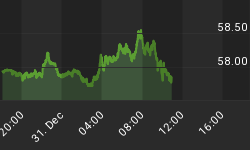The opinions of independent investment advisors with free newsletters and web site market forecasts dropped into neutral at the end of the first week of January. Since then they have recovered and the proportion of neutral opinions has reduced while the proportions of bulls and bears have increased correspondingly. The latest figures for the FIFTI¹ (Free Information From The Internet) Index show 53% bulls in the short and medium term with 23% bears in the short term and 32% in the medium term. Long term the bears outnumber bulls 55% to 36%. None of these are extreme figures and they do not indicate excessive sentiment one way or another.
It must have been the strength of the rally in the first week of 2006 that shocked the opinions of independent investment advisors that make up the FIFTI Index of www.investorsinternet.com into neutral. Many were expecting the stock market to decline at the start of January, much like the start of 2005. Instead, in a week, the market eclipsed the gains of last year - the S&P 500 gained 37 points in the first week of 2006 compared to 36 points in the whole of 2005.
The immediate question that the experts are battling with is whether the rally will last. The break through resistance, at around 10,900 for the Dow and 1,275 for the SPX with targets around 11,200 - 11,300 for the Dow and the low 1,300's for the SPX, is the reason that many say the rally has more room to run in the short-term. After such a rapid rise even the bulls expect a consolidation or mild correction before the targets are reached. The bears regard the rally as a short term over-reaction to the change in the Fed's statement about interest rates, but they concede that the momentum behind the rally has been strong.
The reason that there are more bears in the medium term than the short term is because they believe the technicals and the economic signs do not point to significant upside for the stock market. Some talk about cycle tops in mid-January to early-February, others to a four-year cycle low in October.
The major arguments of the bears, however, relate to the months ahead. By then consumers will have slowed their spending, the housing market will be down, high oil prices will be showing their effect, interest rates will be higher, the yield curve will be inverted, foreign investment will be diversifying away from the dollar and geopolitical risks are unlikely to lessen. These arguments have changed little over the last year but their credibility is supported by well respected names such as Bill Gross at www.pimco.com, Bob Doll at www.ml.com, and George Soros as reported at www.bondsonline.com. Opinions of the bears differ only in the severity of the economic slowdown.
Currently, technical signals are mixed and the panic attack at the Tokyo stock market is of concern. It remains to be seen whether nearby support levels will limit the current correction. If not, a significant top may be in and the stock market could be in for a medium term decline.
¹ The FIFTI Index is based on Free Information From The Internet, and in particular, on advice provided by fifty independent newsletter and Internet site writers selected from the book "The Investor's Free Internet". It is one of the tools that www.investorsinternet.com uses to gauge the stock market's direction for its Members and Subscribers.
















